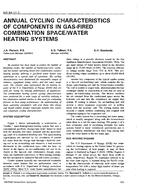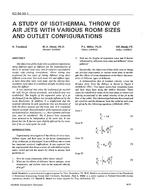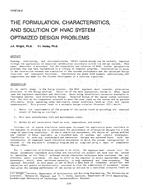Air static pressure must be maintained at a certain level leaving the air handling unit (AHU) to force a suitable amount of air through the terminal boxes. However, an excessive static pressure level is often used due to 1) lack of a control device in a constant-volume (CV) system, 2) a malfunctioning control device in a variable-air-volume (VAV) system, and 3) fear of failure to maintain room temperature. High static pressure often develops excessive damper leakage in older mixing boxes. This results in an inappropriate mixing of hot and cold air for dual-duct systems, excessive reheat in single-duct systems, and an excessive amount of air entering the space. Consequently, the actual fan power and heating and cooling energy consumption all become significantly higher than the design values. Even worse, the system may not be able to maintain room conditions due to unwanted simultaneous heating and cooling and may be noisy due to the excessive static pressure. Proposes to control the hot duct pressure and the variable-frequency drives (VFDs) to control the fan static, ie., the cold duct pressure for dual-duct air handling units. Both a theoretical analysis and results from a case study are presented.
Units: Dual
KEYWORDS: year 1997, Static pressure, building services, energy consumption, air handling units, room temperature, controls, noise, heating, cooling, variable volume air conditioning, constant volume air conditioning, ventilation, case studies, air flow, air temperature, dual duct air conditioning frequency
Citation: ASHRAE Transactions, Vol.103, Part 2, Boston 1997
Product Details
- Published:
- 1997
- Number of Pages:
- 8
- File Size:
- 1 file , 900 KB
- Product Code(s):
- D-16427


